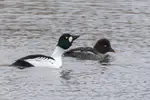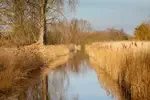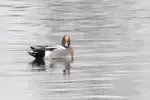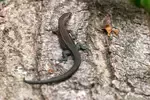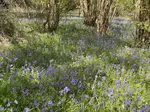- Home
- Walks
- Cambridgeshire walks
- Welches Dam
Welches Dam: A Winter Day on the Ouse Washes
As I left the house early in the morning, I was excited, if cold, looking forward to doing some golden hour nature photography. Our destination was Welches Dam on the Ouse Washes in Cambridgeshire (although the dam was long gone).
The 20-mile stretch of wetlands, the largest of its kind in the UK, was more than just a beautiful place for a weekend walk - it was a critically important habitat that we have an urgent responsibility to protect for both wildlife and people.
Did you know that this area is a vital stopover for overwintering birds, including the majestic Whooper swan, which migrates from Iceland each year to escape the harsh winter?
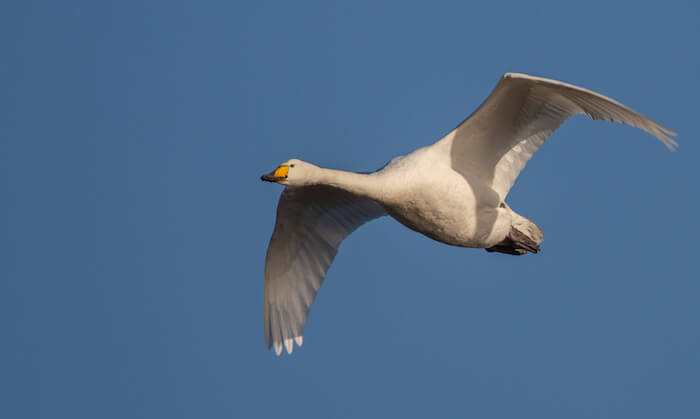 Ouse Washes - home of the Whooper Swan
Ouse Washes - home of the Whooper SwanOur Journey to the Ouse Washes
My husband and I had visited the Ouse Washes before, but this time, we wanted to explore its winter wonders.
As we neared the nature reserve I had to navigate the narrow, winding road along the edge of the river. The blind bend beside a derelict pub was the scariest moment of the journey, and I needed quick reflexes to avoid any potential hazards.
But with caution, we finally arrived at the visitor centre, collected a map, and headed up the steps to cross the bridge over the Old Bedford River on foot.
A Winter Wonderland
The path was wet and muddy, due to recent rains.
We decided on our direction and pressed on towards the row of bird hides, reached by long flights of wooden steps leading up the bank.
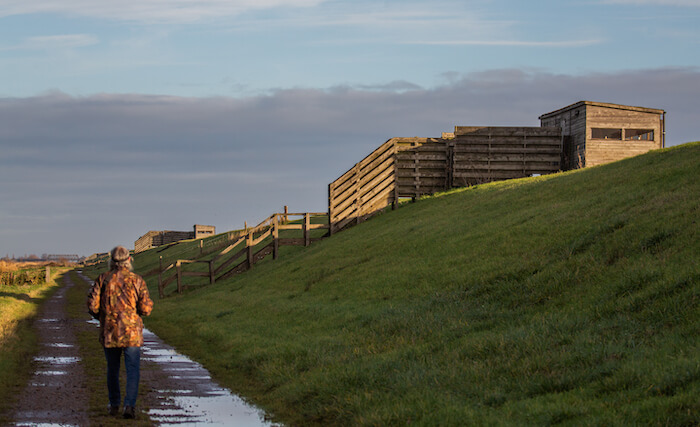 The steps up to one of the bird hides at the Ouse Washes
The steps up to one of the bird hides at the Ouse WashesAll around, the sounds of the wetlands enveloped us - the honks of overwintering geese, the whistles of Wigeon, and the peewit-peewit of Lapwing. It felt as if nature was melting away the stress of the working week.
On reaching each hide and entering quietly, the landscape spread out in front of us. Flooded at this time of year, we knew there were thousands of birds out there, even if it took a while to adjust our eyes and spot them.
Have you ever struggled to describe the location of a bird to someone when there are no obvious landmarks to reference?
It can be frustrating and confusing for both the describer and the listener.
On this occasion even the looming presence of Ely Cathedral in the distance didn’t really help.
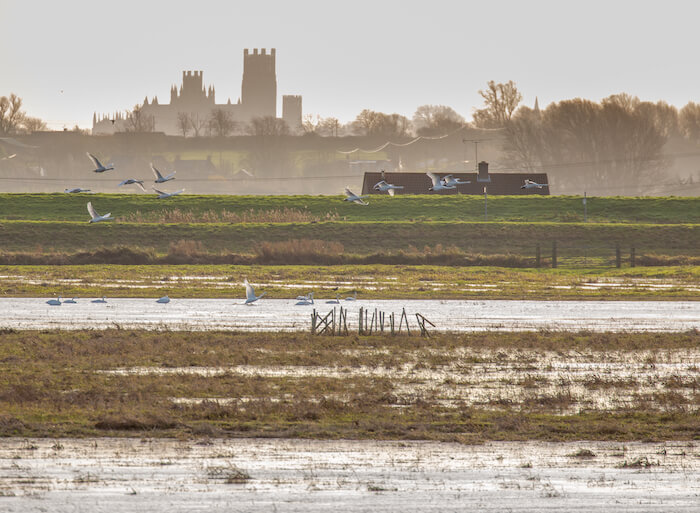 Ely Cathedral in the background
Ely Cathedral in the backgroundPractical Tips for Pointing Out Wildlife
1. Use relative directions: Instead of saying "look left" or "look right," try using relative directions like "look towards the sun" or "look towards the shade."
2. Describe the environment: Paint a verbal picture of the surroundings, including the type of trees, the colour of the leaves, or the presence of water or rocks.
3. Estimate distances: Provide an estimate of how far away the bird is, using measurements like "about 20 feet away" or "halfway up the tree."
4. Focus on the bird's behaviour: Describe what the bird is doing, such as "it's pecking at the ground" or "it's flying from branch to branch."
5. Get creative with comparisons: If you can't find a landmark, try comparing the bird's location to something familiar, like "it's near the tallest tree with a broken branch" or "it's above the patch of bright yellow flowers."
Try to be descriptive and patient. With practice you’ll become a pro at helping others spot those elusive birds.
An Encounter with Fellow Nature Lovers
It wasn’t until the fifth hide that we met anyone else - a lovely retired couple who were longtime RSPB members and volunteers.
"We've been coming here for years," they told us, "and every time, we discover something new."
Their enthusiasm was infectious, and we chatted with them about the different species we'd spotted, from the Whooper swans to the variety of ducks.
They helped explain the differences between the orange bill of the more common Mute Swan and the distinctive yellow triangle of the Whooper's bill.
Talking with them enriched our visit, opening our eyes to even more species we would have missed on our own, including…
- the male Kestrel hovering overhead
- the Peregrine Falcon perched on the fence post
- the female Marsh Harrier with her pale head glowing in the golden hour sunlight
They knew to look for the reason when the lapwings suddenly took wing, pointing out the raptors that had disturbed them.
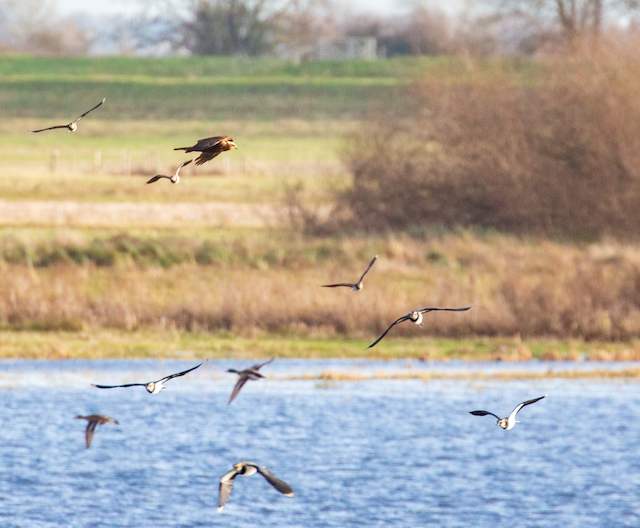 Female Marsh Harrier harassing the Lapwings
Female Marsh Harrier harassing the LapwingsI am always delighted how helpful other bird watchers can be especially when it comes to identifying wild birds.
The gentleman even offered me a look through his powerful binoculars when he spotted a goldeneye followed by a group of pintails out on the water. Two of my favourite duck species.
One of the most common questions you’ll hear when walking around a nature reserve is “Seen anything interesting?” Sometimes the answer is just a shake of the head, but more often than not people are happy to share their sightings, especially if they have seen something unusual.
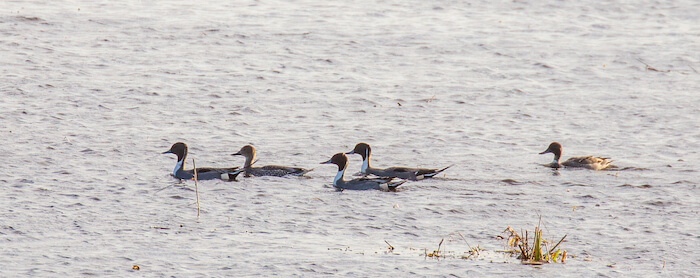 Pintail Ducks
Pintail DucksWell Worth a Visit
So next time you're looking for a meaningful way to spend a winter's day, consider a visit to the Ouse Washes, or your local wetlands.
Go with an open mind and a willingness to chat with your fellow visitors. I guarantee you'll come away with a new appreciation for the wild places that sustain us all - and hopefully a commitment to fighting for their future.
The Ouse Washes opened my eyes to just how important wetlands are, for birds and for people. We all have a role to play in protecting these special places.
I know I'll be back with my boots, my binoculars and a donation for the RSPB. I hope you'll join me in supporting the Ouse Washes and wetlands everywhere.
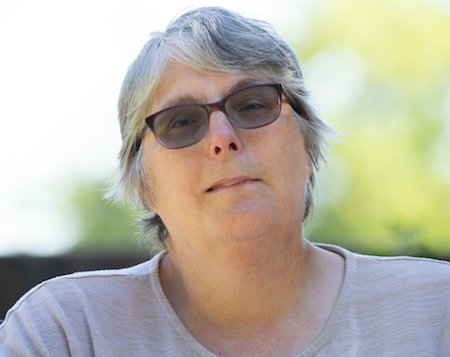
About the Author
For me, it’s never been just about bird names or camera settings, but the thrill of seeing a distant speck turn into a hunting kestrel.
After years of learning how to notice and photograph those moments, my camera has become the tool - and this site the field notebook - where I share what I’ve discovered.
If you’re ready to look a little closer, you’ll find the trips, lessons, and small wins that can help you see and photograph the wildlife right on your doorstep.
Step Behind the Wild Lens
If you’ve enjoyed your time here, you can also follow along by email.
I send the Wild Lens newsletter occasionally. It’s where I share:
- Fresh field notes and recent encounters
- The stories behind favourite photos
- Practical tips that don’t always make it onto the site
You’ll get new UK wildlife guides, photo tips, and ideas for your next walk, straight to your inbox.
